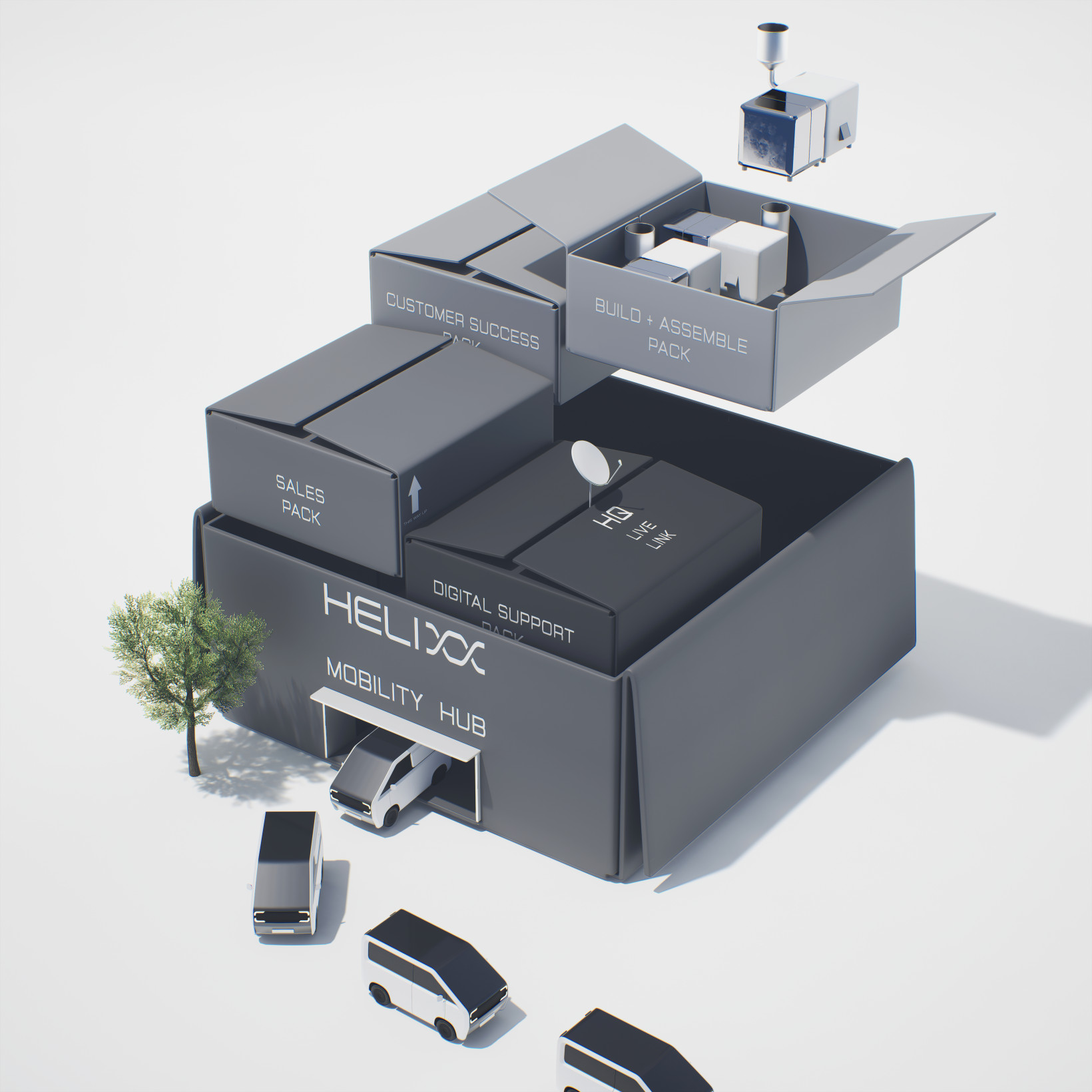Helixx has unveiled the first demonstrator vehicle from the startup’s “factory in a box” system.
The commercial delivery van was built to validate a new form of carmaking. Using software-led production and site designs that are customised to local needs, the factories can be built anywhere in the world. Once the facilities are installed, they can rapidly assemble low-cost electric vehicles.
The concept applies the McDonald’s franchise model to vehicle production. Helixx supplies the materials, designs, processes, and expertise as a white-label license. The customers then assemble the actual vehicles.
It’s a blueprint that promises rapid results. According to Helixx, the system can take a local business from an empty building to finished vehicles in just 180 days.
The framework could also ease the green transition in developing regions — the target markets for Helixx. The demo vehicle aims to amplify engagement and feedback from these markets.
Designed for easy assembly and optimum interior load space, the van features a hybrid aluminium chassis. With a 2,100-litre capacity and a 500-kg maximum payload, the vehicle accommodates the bulk of global shipping pallets.
One eye-catching feature is the central driving position. The single-seat design optimises load space, while ensuring compatibility in both left- and right-hand-drive countries.
To minimise manufacturing complexity, a specific ruleset guides the vehicle construction. As a result, the process can be replicated in Helixx mobility hubs. Customers can then integrate white-label designs and localised branding.
Inside the body system, there are five key structural components. All of them “click and bond” together for easy assembly, which also cuts manufacturing costs.
Steve Pegg, the startup’s CEO and co-founder, said the van proved the replicability of the methods.
“The demonstrator transforms Helixx from a great idea into a tangible, accessible proposition,” Pegg told TNW.
It also previews the company’s real commercial delivery van. The vehicle is is set to enter production in 2024, alongside a pick-up truck for the construction industry, and two passenger vehicles for ride-hailing fleets.


Helixx used in-house 3D printing to create the body parts. All of the components were captured digitally. They will now provide the basis for an “industry-first” wide-scale, internally recyclable polymer-moulding body system.
To assemble the parts, Helixx used a first-time-fit during the bonding process. No welding of stamped body panels was required. Consequently, the body system has an estimated 30% less mass — and hundreds of fewer components — than traditional vehicles.
Another aspect of Helixx’s model is the Siemens Xcelerator. The software suite can create digital twins for every part of the manufacturing ecosystem. Each stage of the process, from site survey to manufacture and vehicle recycling, can then be modelled and validated before it’s rolled out.


Helixx also wants the van to showcase the startup’s offering to license holders. Subscriptions for Helixx vehicles start at $0.25 per hour. Operators can also subsidise revenues through e-ink advertising panels and data-as-a-service.
It’s a business model that’s specifically designed for emerging markets.
“In countries without an established vehicle manufacturing legacy, heavy reliance on imports — often of unsuitable vehicles — typically benefits exporters and local dealers at the expense of local economic growth,” Pegg said. “Helixx promotes local ownership of manufacturing and distribution, ensuring economic advantages and a clear return on the license investment.”


The next step for Helixx is a test production run of 100 vehicles at a pilot hub in the UK. Subsequently, the company plans a customer vehicle and factory rollout at a concept hub in Southeast Asia.
As a package, Helixx believes the system offers a new vision of zero-emission mobility-as-a-service. If all goes to plan, the model will not only improve air quality, but also foster economic development in emerging regions.
“In the context of global net-zero ambitions, the shift to low-carbon transport, and vehicle electrification, Helixx’s system gains even greater importance,” Pegg said. “It goes beyond adding more vehicles to highly populated cities.”
Services Marketplace – Listings, Bookings & Reviews